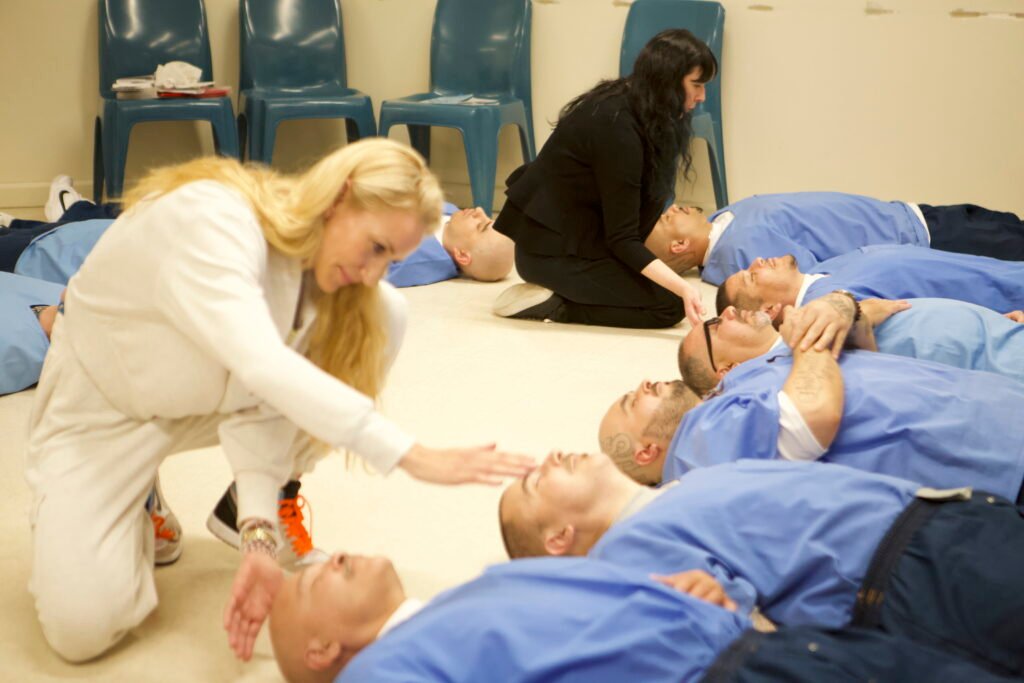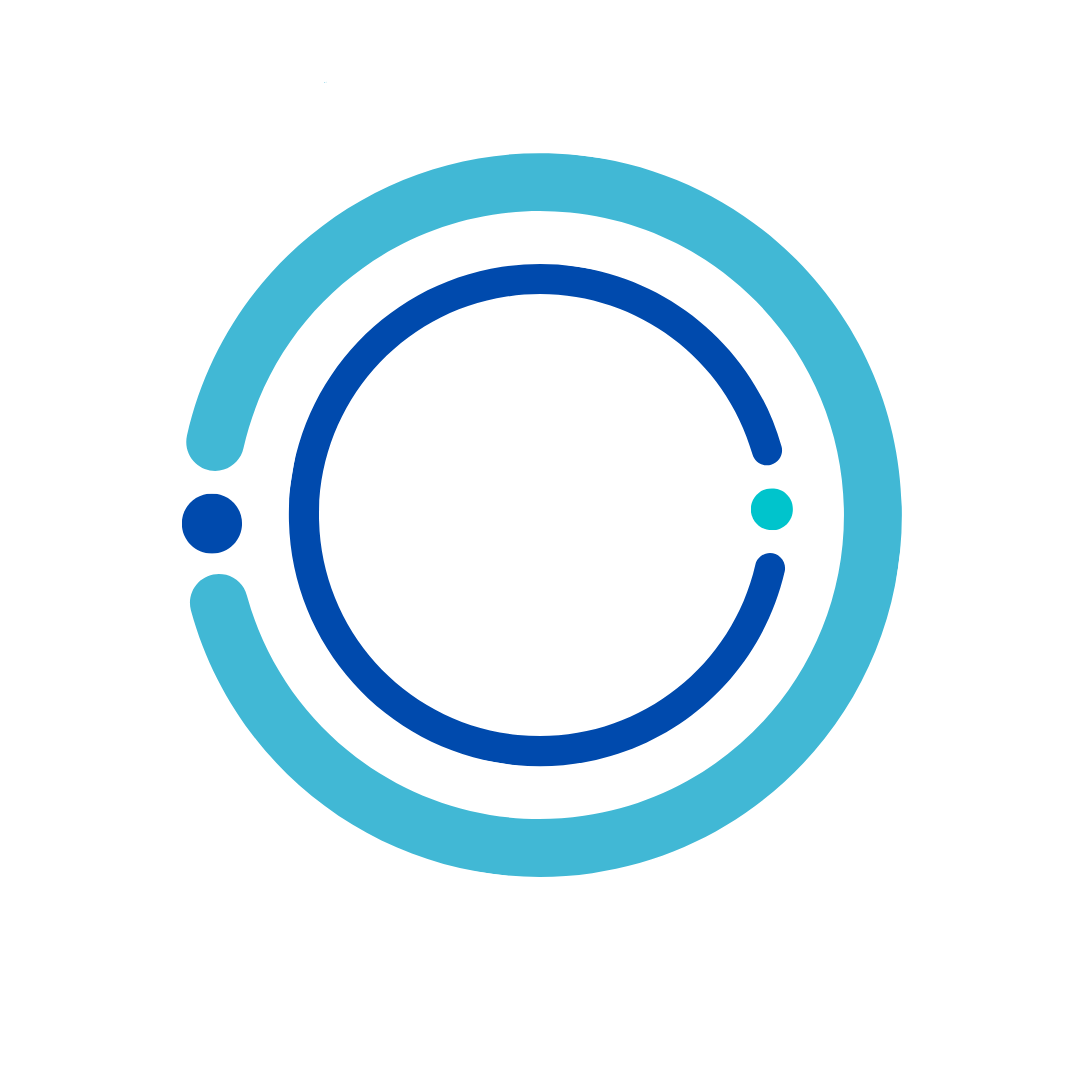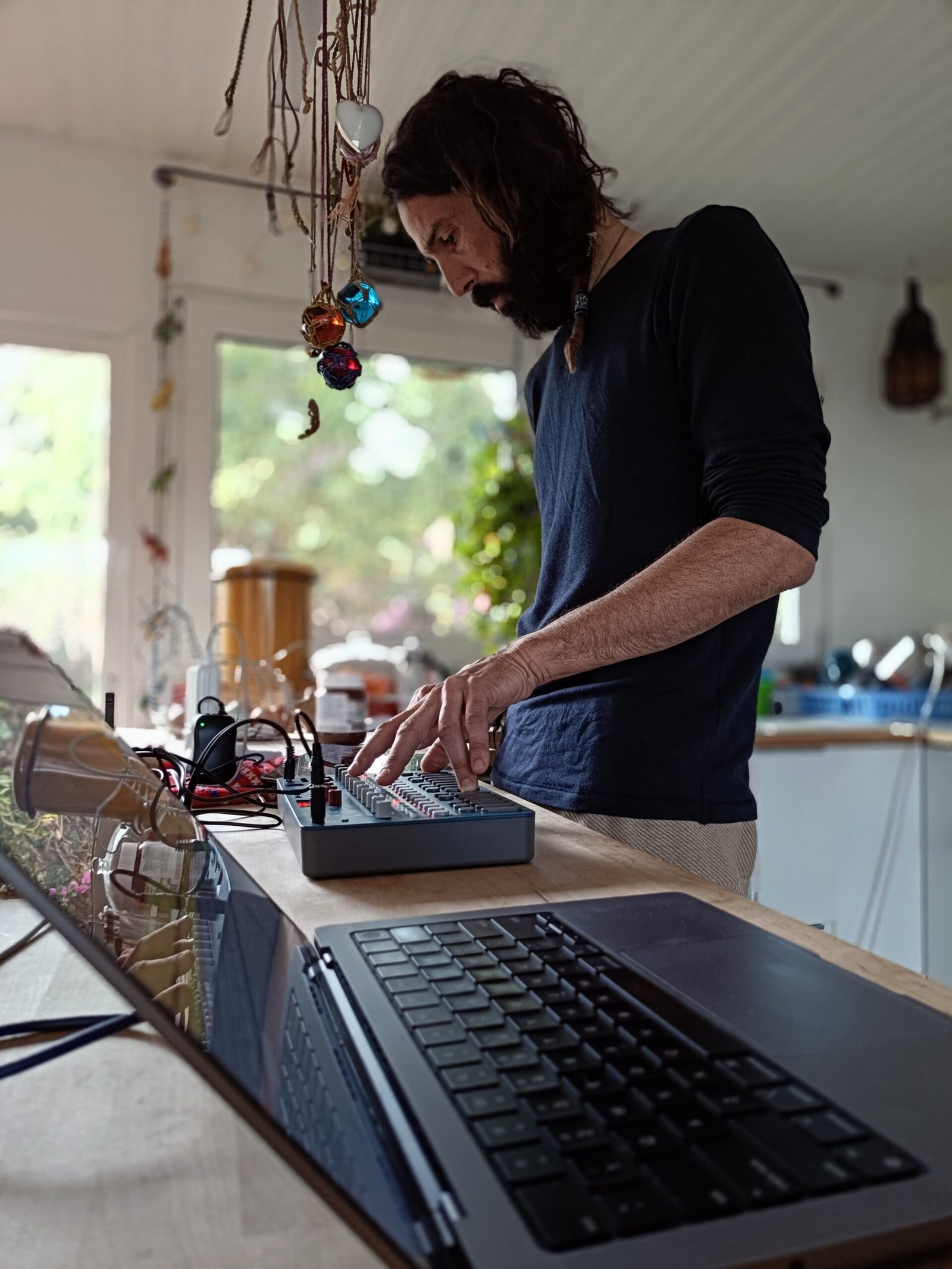The First time:
inner
Gogi
Dance
Support Inner GOGI Dance
Help Caroline and Lisa bring the power of Innerdance into U.S. prisons.
Your contribution will fund future sessions, equipment, and travel costs to expand this transformative work.
👉 Donate here: https://www.gofundme.com/b45d0ff8
Every gesture counts. Thank you for being part of this movement. 💙
From Vagus to Vegas

This past year has felt like a continuous death process—both emotional and cellular—as my whole being has shed the unnecessary to make space for the incredible learning and opportunities I have the privilege of experiencing now. For over nine months, I have been developing innerdance in a Scottish prison, learning how to navigate a space like no other—one that requires deep respect for its structures while gently introducing conversations and practices of internal transformation and freedom.
A few days ago, I visited Los Angeles County Jail and then travelled to Calipatria State Prison to introduce a fusion of innerdance with GOGI—Getting Out by Going In—a highly successful non-profit programme designed by inmates for inmates, promoting positive decision-making and service as a key to freedom. Founded by Coach Taylor, GOGI is now studied and practised by over 200,000 students across America and parts of Mexico. With her vision and generous spirit, Coach Taylor recognised how GOGI students could benefit from working with sound to embody the GOGI Life Tools on a cellular level, integrating their learning in profound ways. Under her mentorship and alongside my dear friend and phenomenal co-facilitator Lisa, we were invited to visit the prison and offer a session to some of the Coaches leading the GOGI programme.
In preparation for our visit, we asked our innerdance teacher, pi, to create specific soundscapes inspired by the four GOGI stages of development. This allowed us to facilitate an in-person session with a group of inmate GOGI leaders. These soundscapes are also available through the prison intranet, ensuring that all GOGI students can visit the experience through a recorded video of the session or listen to the tracks whenever they feel called to.

Throughout the day, we met with different groups from various prison yards, listening to stories of transformation from men who had been incarcerated for over 20 years. They shared their favourite GOGI Life Tools and their ideas on how to introduce GOGI to the UK prison system. We were warmly welcomed and received invaluable insights on how to proceed. The men were deeply engaged, eager to be of service, and grateful for the opportunity to contribute. Their voices were heard, their opinions validated, and they were actively involved in these developmental conversations—each resonating strongly with the idea of collective healing.
After the small GOGI Circle Group discussions, inmates were invited to lie down on the floor, head to head, forming one large circle. There was uncertainty among the staff about whether the men would consent or participate in the session, given the high level of fight-or-flight survivalism in such an environment. Yet, in full trust of Coach Taylor and the GOGI programme, they lay down and received her meditation, which seamlessly wove in the GOGI Life Tools. At one point, I closed my eyes and recognised the familiar rhythm of self-inquiry I bring into innerdance. I felt our alignment as I bore witness to the shift in energy in the space. As the soundscape began, Lisa and I moved within the circle, attuning to each participant’s emotional state and giving them time to adjust to our presence in this vulnerable moment.
In such a structured and sensitive environment, we had to be mindful of every detail—even what we wore. Perfume, jewellery, or anything personally identifiable was not appropriate. Our clothing was intentionally loose and modest, and unlike our usual innerdance sessions, we could not be barefoot while facilitating. This mirrored my experience within the Scottish prison system, where I have intuitively chosen plain, dark clothing—intentionally contrasting with the prison uniform so I can be easily identified in case of an emergency.
Facilitating in this context required us to draw upon years of trauma-specialised therapy while simultaneously embracing a beginner’s mind—letting go of assumptions and responding in real time to what we were witnessing. This was the first time Lisa and I had ever facilitated with our shoes on, heightening our awareness of how to appropriately engage in a space where inmates were serving extensive sentences. Our only prior references were movies and documentaries about American prisons, yet we knew that direct experience would teach us far more than we could have anticipated.
For a moment, I worried that I might step on someone or trip, disturbing their experience. That brief concern only reinforced my sensitivity to their needs—acknowledging that for many, this was an entirely unfamiliar practice. Prison populations are highly traumatised, so therapeutic touch was neither appropriate nor permissible. However, because innerdance is responsive to the individual, the group, and the environment, our trauma-informed facilitation became an exercise in energetic presence rather than physical contact.
In an environment that demands constant hypervigilance, it was extraordinary to witness inmates feeling safe enough to close their eyes and enter a deep process. For some, this may have been the first time in years that they truly relaxed. Within minutes, we saw a shift—muscles softening, bodies resting more fully on the floor, faces adopting serene expressions. I became curious: How do I touch without physical touch? I let my hands speak, drawing from my extensive trauma training and knowledge of polyvagal theory. I positioned my fingertips near their necks, as if stimulating the vagus nerve. When I sensed activation in the pineal gland and temporal lobe—indicated by shifts in body temperature and vibration—I gently placed my hands near the corresponding parts of their heads. If I noticed shallow breath, I moved my hands near their hearts and lungs, offering nonverbal reassurance. Every movement conveyed safety, pacing, and respect.
In working with highly vulnerable and traumatised populations, I understand the importance of balance—honouring the parasympathetic nervous system, ensuring down-regulation to support homeostasis. Where there were energetic or emotional blocks, I intentionally choose not to activating the already-heightened sympathetic nervous system, instead creating conditions for flow through a soothing presence. Recent research into neuroplasticity suggests that deep meditative states and sound-based practices can rewire neural pathways, supporting long-term behavioural change. This was precisely why, as trauma-specialist ambassadors of innerdance, we had been invited to collaborate with GOGI’s top prison leadership.
The results were profound. The shifts we witnessed were not only energetic but likely reflected changes at a neurological level—gamma brainwave activity increasing as clarity and deep presence emerged, the Default Mode Network quieting to allow expanded awareness beyond conditioned narratives. This was more than relaxation; it was the potential for sustained transformation. It cannot be overstated how rare it is for a prison population to move beyond a survival state, allowing these body processes to unfold.
The collective shift in energy was palpable. As we gathered for integration, a deep sense of peace rippled through us all. We were not the same—we had been transformed, filled with gratitude for each other and the experience we had shared.
Our time at Calipatria had come to an end, and we were back on the road, headed for Las Vegas. It’s not a city I had ever felt drawn toward, yet I felt the thrill of new adventures. Over the following days, I remained porous and in process, absorbing information at a depth and speed I knew I could not sustain for long. As I walked through the casino floors, I was struck by the flashing lights, the sounds demanding my attention, the sugary scents masking an undercurrent of desperation. In my heightened state of presence, I could feel the stickiness of man-made electromagnetic fields clinging to my body. My steps slowed, my body felt dense, and I pushed forward, determined to reach daylight.
A few years ago, prior to innerdance, my neurodivergent brain would not have coped with the overstimulation. My mood would have been drastically altered, and my sympathetic nervous system would have been in fight—edgy and snarly as I clawed desperately for an exit.
It was fascinating to notice the difference in how I operate now. My electromagnetic field was resonating at a higher frequency than the artificial field inside the casinos—and if you have ever been, you know firsthand how much design and manipulation is in place to ensure you are caught up and hypnotized to stay and spend.
The casino environment plays directly on the brain’s reward circuitry, triggering dopamine surges that keep people engaged, while the lack of natural light and spatial disorientation create a trance-like effect.
The paradox struck me deeply. Lisa and I had just co-facilitated in a prison where we witnessed more internal freedom than we saw at the casino tables. We are consciously working with sound to support trust and transformation, yet there are also institutions that use these same mechanisms to ensnare and enslave.
As I wandered around, I began to reflect on the many ways we are imprisoned—sleepwalking through our days, locked in cycles of unconscious habit. This realization further fortified my intention to support as many people as I can to wake up to their potential and to live their dreams, wherever they are.
My path and purpose are clarifying, and more opportunities are arising so I can continue to
work with prison populations, gathering data and gaining unique insights into working in
specialised environments.
So what have I learned so far? To find true freedom, I need to go to prison…
by Caroline Georgiou – all rights reserved






